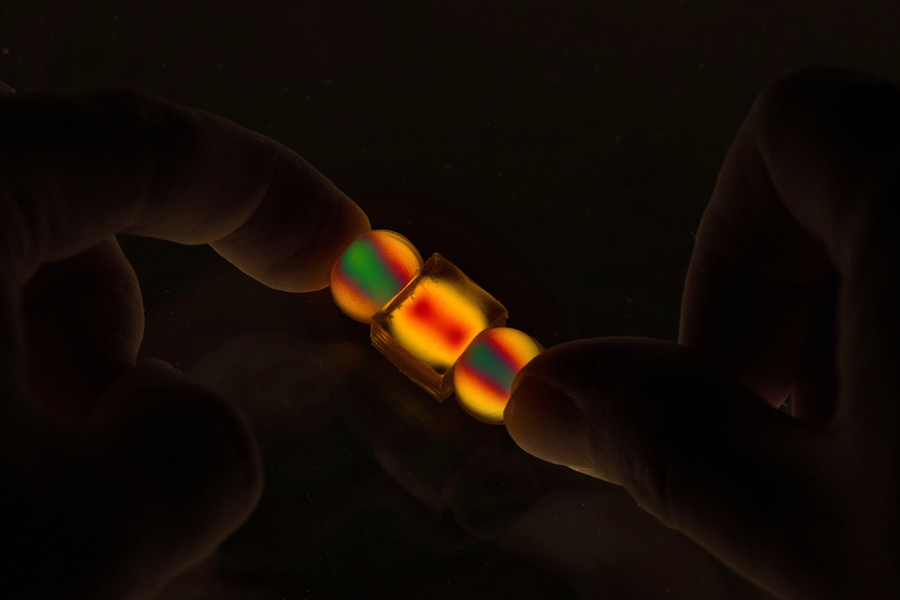2024-03-25 マサチューセッツ工科大学(MIT)

MIT researchers developed a method that allows for 3D experiments that can reveal how forces are transmitted through granular materials, and how the shapes of the grains can dramatically change the outcomes. In this photo, 3D photoelastic particles light up and change color under external loads.
Image: Courtesy of the researchers
<関連情報>
- https://news.mit.edu/2024/new-experimental-technique-probe-mechanisms-landslides-earthquakes-0325
- https://www.pnas.org/doi/10.1073/pnas.2319160121
3次元粒状媒体中の力連鎖の動的イメージング Dynamic imaging of force chains in 3D granular media
Wei Li and Ruben Juanes
Proceedings of the National Academy of Sciences Published:March 25, 2024
DOI:https://doi.org/10.1073/pnas.2319160121
Significance
Since the first medical X-ray radiograph in 1896, tomographic imaging techniques have extended our understanding of the geometry, density, phase composition, and physical processes inside a three-dimensional (3D) body. Here, we introduce interference optical projection tomography to visualize and quantify force chains in 3D granular media—the most abundant form of solid matter on Earth and beyond. By combining the principles of photoelasticity and tomography, our technique provides direct visualization of the particles’ force-chain network and provides the microscopic explanation for why a pack of angular particles is stronger than one of round particles. This particle-level understanding will help forecast geologic phenomena like landslides and earthquakes and better engineer man-made structures like railway ballast and robotic grippers.
Abstract
Granular media constitute the most abundant form of solid matter on Earth and beyond. When external forces are applied to a granular medium, the forces are transmitted through it via chains of contacts among grains—force chains. Understanding the spatial structure and temporal evolution of force chains constitutes a fundamental goal of granular mechanics. Here, we introduce an experimental technique, interference optical projection tomography, to study force chains in three-dimensional (3D) granular packs under triaxial shear loads and illustrate the technique with random assemblies of spheres and icosahedra. We find that, in response to an increasing vertical load, the pack of spheres forms intensifying vertical force chains, while the pack of icosahedra forms more interconnected force-chain networks. This provides microscopic insights into why particles with more angularity are more resistant to shear failure—the interconnected force-chain network is stronger (that is, more resilient to topological collapse) than the isolated force chains in round particles. The longer force chains with less branching in the pack of round particles are more likely to buckle, which leads to the macroscopic failure of the pack. This work paves the way for understanding the grain-scale underpinning of localized failure of 3D granular media, such as shear localization in landslides and stick–slip frictional motion in tectonic and induced earthquakes.



